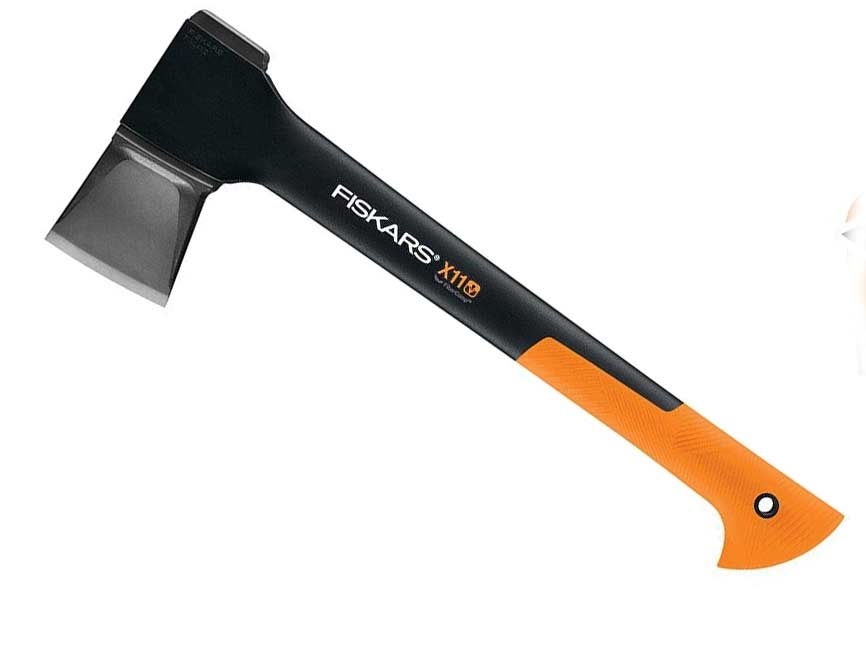We may earn revenue from the products available on this page and participate in affiliate programs. Learn More ›
You can use a wrench for a hammer, a knife for a screwdriver, and even a shovel for a rake, but an axe is one of those tools that, when you need one, nothing else will suffice. Beyond weight, handle length, and personal preference, here are a few basic considerations when choosing a proper axe.
Double or Single Bit
The blade of an axe is referred to as its bit, and the first decision is whether you need one or two of them. A double-bit axe has a blade on either end of the head and is designed exclusively for chopping. A single-bit axe has a blade edge on one end of the head and a flat hammering surface, or poll, on the other. Double-bit axes offer more cutting surface, while a single-bit axe is built for not only chopping, but also for pounding on spikes and stakes or being driven like a wedge.
Handle Material
The axe handle, which is also referred to as its haft, can be classic wood, metal, or a synthetic material. Synthetic handles often incorporate shock-reduction components to minimize the impact to your joints. They are also more durable, although wood handles are easier to replace should one break.
Splitting Mauls
If you primarily intend to split rather than chop wood, you need a splitting maul. It functions just like an axe but with a much heavier butt that creates a wedge-like blade geometry. Sink one of these in a round of hardwood, and then use a sledge hammer to drive it on through. Or use the maul’s butt to pound on dedicated splitting wedges.



